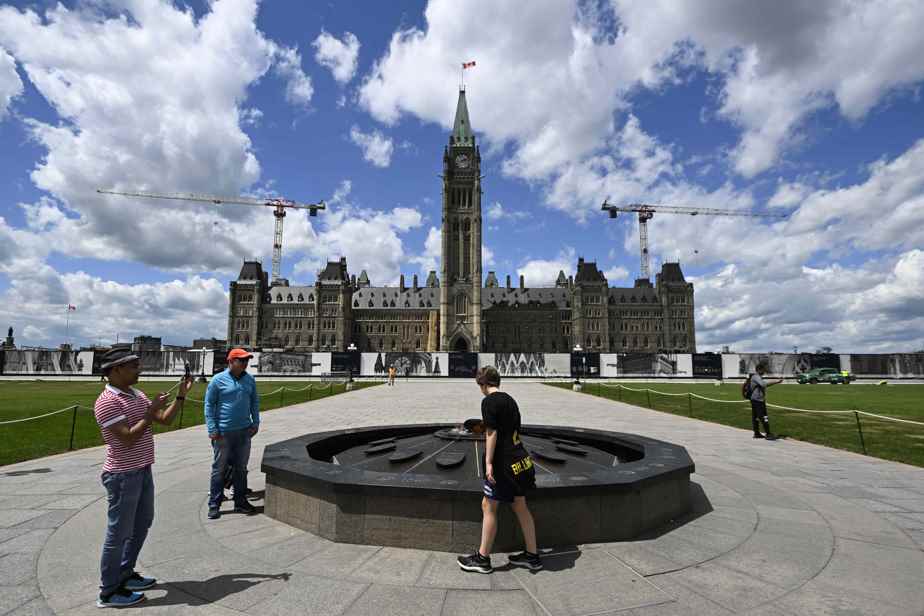On the occasion of Canada Day, it is not useless that we question ourselves somewhat about the deep and true meaning of federalism and, above all, that we distinguish it from unitarism.
Posted at 11:00 a.m.
Thus, a unitary state is characterized by the fact that state sovereignty is exercised by a single order of government and, more specifically, by a single parliament. This does not prevent there from being a decentralization, but this is then only administrative rather than legislative. It is essentially based on delegated and not sovereign powers as such.
In a federation, legislative powers and state sovereignty are shared between at least two levels of government. Everyone is sovereign in the exercise of their constitutional powers.
There are also so-called quasi-federal or regional states. In these states, there is a certain decentralization of legislative powers, but this does not enjoy such strong constitutional protection as in a true federation. This is probably the case for Catalonia or Scotland, these two political entities enjoying extensive, but nevertheless relatively precarious, devolution of powers within their respective states.
In the world there are also a number of states that we will call hybrids. These are states whose nature is ambiguous and which do not clearly fall into any category. Most of the time, they are unitary states that have many federal characteristics without being “quasi-federal”, as we described this last concept previously.
As for the confederation, in its classical conception, it constitutes an association of States and not a State in itself. These states delegate powers to joint bodies. Each member state has a right of veto with regard to the most important decisions and can withdraw from the confederal link whenever it sees fit. The confederal link in question is itself sealed by one or more international agreements. The European Union, with its basically confederal structure, but also with its many federal features, constitutes a model sui generisa redesigned or new kind of confederation, some would say.
Canada is clearly a federation. Not perfect though. But there was never a confederation. Neither before nor after 1867.
Many Canadians have a unitary rather than federative vision and understanding of the country. They promote the centralization of powers in the hands of federal authorities and see Canada as a mononational or uninational entity. For them, there is only one nation in Canada: the Canadian nation.
Yet Canada is actually made up of many nations. There is the Quebec nation, the aboriginal peoples, the Acadian people, and so on. In fact, Canada is multinational and the historic choice of federalism for this country was precisely aimed at allowing this intrinsic diversity to flourish, within provincial autonomy. In this context, it is not so much the centralization of powers that must be sought within the Canadian system as the balance of powers, as well as respect for the provinces and their authority in certain matters determined by the Constitution. We must also value the recognition and respect of Aboriginal rights.
Asymmetric federalism
The ideology that Canada should consist of a very strong central government, 10 theoretically equal provinces and individuals enjoying constitutional rights and freedoms is widespread in Canada. It is largely inspired by the work of Pierre Elliott Trudeau. But wouldn’t it be to our advantage, as a society, to opt for a more asymmetrical federalism, that is to say, in particular, a federalism that promotes the affirmation and recognition of Quebec’s particular identity?
Asymmetric federalism is nothing but a flexible federalism, capable of adapting to the needs and concerns of the various components of the federal state. This type of federalism, whose virtues have been recognized in Ottawa, both by the government of Paul Martin in 2004 (agreement on health entitled “Asymmetric federalism that respects the jurisdictions of Quebec”) and by that of Stephen Harper (Canada Accord -Quebec on UNESCO), is, in our opinion, the way of the future for Canada. It would allow Quebec to strengthen its own identity, while giving the other provinces the opportunity to make choices different from those of Quebec society, or even to acquiesce, if they so wish, to federal interventions in areas of provincial jurisdiction. .
However, this asymmetrical federalism we are talking about cannot be all-out or unlimited. In fact, it seems essential to us that all Canadians share a certain number of values, resources and ideals, in short, share a societal experience that is purely Canadian.
Be that as it may, Canadian federalism is already asymmetrical in many respects, particularly in terms of language. Asymmetry is therefore not incompatible with respect for the federal principle, insofar as it is well marked out and weighted.
Between the unitary state that many see in Canada as a whole and true federalism, we resolutely opt for the second. But this federalism, precisely to be true, must celebrate its intrinsic diversity, including the specificity of Quebec. And the best way to achieve this is by fully respecting the jurisdictions of the provinces, by strengthening their voice in the Canadian space and by refusing this unitarism which does not suit a federal state like Canada.

